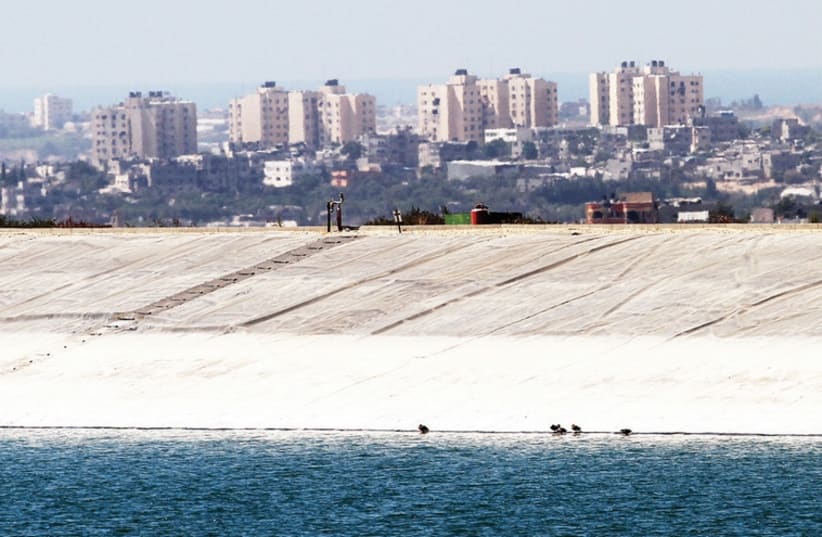See the latest opinion pieces on our page
Haaretz writer Or Kashti mocked the indifference of the wealthy elites and politicians: “Perhaps if the [government] ministers and senior officials responsible for the failure had to cope with similar questions they would be doing more and talking less. But their families are taken care of.”This fact must only hold true for the very top of the financial pyramid, because even the upper middle class is being overburdened by the massive cost of acquiring even a small apartment in a decent part of town.As usual the housing crisis is being turned into political hay in the elections. “The prime minister is responsible” shout headlines and op-eds. Labor MK Stav Shaffir, who made her name as a “social justice leader” during the 2011 protests that helped catapult her into the Knesset, said, “The protest that occurred three-and-a-half years ago never really ended,” according to reports.The latest iteration of the tent protest is being led by Shai Cohen, a father of two from Givatayim. “I’m 40 and I don’t have an apartment,” he told reporters. His statement belies the claim that the protests never really ended. Of course they ended. Three hundred thousand or so Israelis turned out to protest in 2011 and all they achieved was getting several younger people elected to the Knesset, who can now pay for an apartment. Be honest. That’s what happened. 300,000 came out to protest, now several new Knesset members are drawing decent salaries.But the millions of Israelis who have no future in this country in which they can save some money for the future or afford decent housing have been left behind.It isn’t just Shai Cohen. Have you done the math of what a normal Israeli earns versus what she must shell out for an apartment? Average monthly family income in Israel is NIS 14,000. The average family spends NIS 5,600 on their apartment, leaving them around NIS 8,400 per month. Some of that goes for car payments, and if they have kids (which most Israeli families do), some goes for the kids. What’s left over to save? NIS 1,000 a month? NIS 2,000?Let's say they want to buy a modest apartment within a reasonable commuting distance to their job. A million shekels is the minimum cost, and in Israel one must put down 30%. So how do they get the NIS 300,000 needed, when apartment prices are rising 10%-20% a year, while their salaries increase at 1%-5% per year? Do the math: Even if they save NIS 24,000 a year, and after 15 years can now afford that apartment – it now costs NIS 2.5m., so they’re still short NIS 400,000.Let’s admit it: it is a mathematical fact that there is absolutely no way for an Israeli middle or lower class individual graduating from university today – or leaving the army after sacrificing three years of their life to it while earning a meager NIS 400 a month – to purchase an apartment. Ever.There is no solution being offered by any politician to ameliorate this catastrophic failure. “Affordable housing” is a stop-gap measure. More housing across the Green Line is a stop-gap measure. The 550,000 Israelis living over the Green Line merely took a momentary pressure off the failed housing market in Israel. Another half-million Israelis can’t be exported over the Green Line the way they were in the past 20 years.Why has the housing market failed? You can drive around Israel and see for yourself. Take a gander at the green spaces around Petah Tikva and the towers people are crammed into. Why are there so many economically unsuccessful kibbutzim dominating hundreds of thousands of dunams that could have been opened up to development, rather than failed business ventures? Consider how the Negev was planned to have one giant town in Beersheba while several kibbutzim would dominate the rural environment.The failure of the housing regime to meet the needs of the population in the Negev is illustrated by the 50,000 Beduin who built 40 unrecognized villages on 800,000 dunams of state land.That land should have been sold off long ago for natural development, to make the Negev a dynamic place that wealthier populations might want to move to. Instead, the shackles of state ownership and mismanagement of the land meant the Negev never developed a real local economy. Unlike Arizona in the US where people fled the boring East Coast cities to make new lives, people have to be begged to move to the Negev because of how glaringly restrictive the housing situation is, and how dull it is to live there.Other desert economies, like the Gulf Arab states, are rushing ahead of Israel by making their housing markets dynamic. For all the discussion of their hardships, Palestinians are living in private homes in the West Bank, with more space and lower cost per capita than Israelis.Israel’s housing policy is the result of a failed socialist legacy, built on the kind of housing plans that would have been welcomed by Soviet commissars. It is 2015 and Israel is living in the 1980s. The housing bill has come due. It’s time to pay it and enact massive, sweeping reforms.Follow the author on Twitter @Sfrantzman.
Terra Incognita: Israel’s politicians must get real about housing
The millions of Israelis who have no future in this country in which they can save some money for the future or afford decent housing have been left behind.
